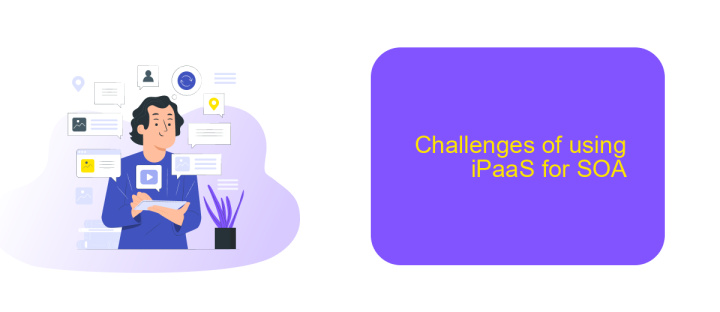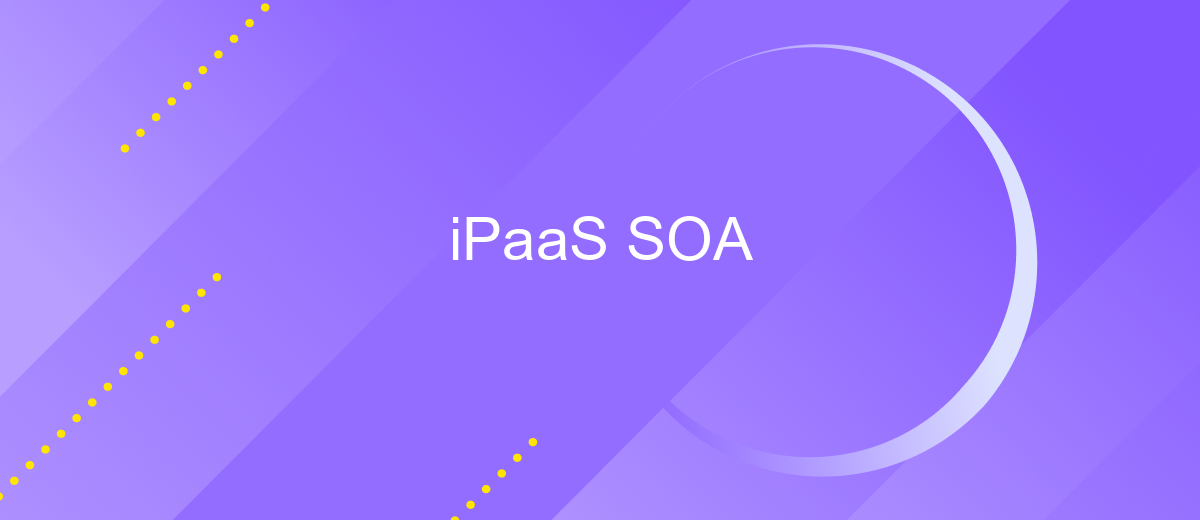iPaaS SOA
In the rapidly evolving landscape of cloud computing, Integration Platform as a Service (iPaaS) and Service-Oriented Architecture (SOA) have emerged as pivotal frameworks. These technologies enable seamless integration and efficient management of diverse applications and services. This article explores the synergy between iPaaS and SOA, highlighting their roles in enhancing organizational agility and streamlining business processes.
Introduction
In today's rapidly evolving digital landscape, businesses are increasingly relying on Integration Platform as a Service (iPaaS) and Service-Oriented Architecture (SOA) to streamline their operations and enhance connectivity between disparate systems. These technologies enable organizations to integrate various applications and data sources, ensuring seamless communication and improved efficiency.
- iPaaS provides a cloud-based solution for integrating applications and data across different environments.
- SOA focuses on designing and deploying services that can be reused across various business processes.
- Tools like ApiX-Drive facilitate the setup of integrations without requiring extensive coding knowledge.
By leveraging iPaaS and SOA, companies can create a more flexible and scalable IT infrastructure. Services such as ApiX-Drive simplify the integration process, allowing businesses to connect multiple applications effortlessly. This not only reduces operational costs but also enhances the agility and responsiveness of the organization, enabling it to adapt quickly to changing market demands.
iPaaS vs. SOA

Integration Platform as a Service (iPaaS) and Service-Oriented Architecture (SOA) are both frameworks designed to facilitate the integration of various applications and services within an organization. iPaaS, like ApiX-Drive, offers a cloud-based solution that simplifies the integration process by providing pre-built connectors and a user-friendly interface. This allows businesses to quickly set up integrations without the need for extensive coding or IT involvement. iPaaS is particularly beneficial for organizations looking for agility and speed in connecting disparate systems, enabling seamless data flow and automation.
On the other hand, SOA is an architectural approach that emphasizes the use of loosely coupled services to support the requirements of business processes and users. SOA relies on services that communicate over a network, often using protocols like HTTP or SOAP. While SOA provides a robust framework for building scalable and reusable services, it typically requires more extensive planning, development, and governance. This makes SOA a better fit for organizations with complex, long-term integration needs, whereas iPaaS is ideal for those seeking quick, cost-effective solutions.
Benefits of using iPaaS for SOA

Implementing iPaaS (Integration Platform as a Service) for SOA (Service-Oriented Architecture) offers numerous advantages, streamlining the integration process and enhancing overall system efficiency. iPaaS solutions like ApiX-Drive provide a seamless way to connect disparate systems, ensuring smooth data flow and communication between services.
- Scalability: iPaaS platforms can easily scale to accommodate growing business needs, allowing for the addition of new services and applications without significant reconfiguration.
- Cost Efficiency: By reducing the need for custom coding and manual integration, iPaaS solutions lower operational costs and minimize the risk of errors.
- Speed: iPaaS accelerates the integration process, enabling quicker deployment of new services and faster response to changing business requirements.
- Flexibility: With a wide range of pre-built connectors, iPaaS platforms like ApiX-Drive offer flexibility to integrate various applications and services effortlessly.
- Enhanced Security: iPaaS solutions provide robust security features, ensuring that data transfers and communications between services are secure and compliant with industry standards.
Overall, leveraging iPaaS for SOA simplifies the integration of complex systems, enhances operational efficiency, and provides a scalable, cost-effective solution for businesses. Services like ApiX-Drive further ease this process by offering user-friendly tools and pre-built connectors, making it easier for organizations to achieve seamless integration.
Challenges of using iPaaS for SOA

Implementing iPaaS for SOA presents several challenges that organizations must navigate to ensure successful integration. One of the primary issues is the complexity involved in managing various APIs and data streams, which can lead to significant overhead in terms of time and resources.
Another challenge is maintaining data consistency and integrity across multiple systems. Since iPaaS solutions often involve connecting disparate applications, ensuring that data remains accurate and up-to-date can be a daunting task.
- Security concerns: Protecting sensitive data during transfer and storage.
- Scalability: Ensuring the iPaaS solution can handle growing data volumes and user demands.
- Customization: Adapting the iPaaS platform to meet specific business needs.
- Vendor lock-in: Risk of becoming too dependent on a single iPaaS provider.
Despite these challenges, tools like ApiX-Drive can help streamline the integration process by providing user-friendly interfaces and automated workflows. By leveraging such services, organizations can mitigate some of the complexities associated with iPaaS for SOA, ultimately leading to more efficient and effective integration solutions.
Conclusion
In conclusion, the integration of iPaaS and SOA represents a significant advancement in the realm of enterprise architecture. By leveraging the strengths of both paradigms, organizations can achieve a more scalable, flexible, and efficient IT infrastructure. This synergy not only facilitates seamless connectivity between disparate systems but also promotes agility and innovation, enabling businesses to respond swiftly to changing market demands and technological advancements.
Moreover, platforms like ApiX-Drive exemplify the practical implementation of iPaaS solutions, offering user-friendly tools for automating and streamlining integrations. Such services empower organizations to effortlessly connect various applications and data sources, reducing the complexity and cost associated with traditional integration methods. Ultimately, the adoption of iPaaS and SOA, supported by robust integration services, paves the way for enhanced operational efficiency and sustained competitive advantage in today's dynamic business environment.


FAQ
What is iPaaS?
How does iPaaS differ from SOA?
What are the benefits of using iPaaS?
Can iPaaS be used for real-time data integration?
What are some common use cases for iPaaS?
Apix-Drive is a universal tool that will quickly streamline any workflow, freeing you from routine and possible financial losses. Try ApiX-Drive in action and see how useful it is for you personally. In the meantime, when you are setting up connections between systems, think about where you are investing your free time, because now you will have much more of it.

